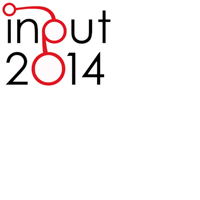Re-Use/Re-Cycle Territories: A Retroactive Conceptualisation for East Naples
Abstract
In the vast majority of cities all over the world, urban growth takes place in peri-urban spaces. City models are in deep crisis facing the disappearance of differences between city and countryside. The urban sprawl of settlements in Italy, and also in Europe, is quite different from sprawl phenomenon and suburbs basically referring to American cities. Urban sprawl is characterized by one-family houses, dispersed in the countryside and by large industrial enclaves close to infrastructures networks. Italian situation can be interpreted as a peri-urban model instead of sprawl condition. The rural-urban fringe derives from the erosion of the countryside due to the abandoned residential settlements and the industrial patterns. In the contemporary Italian urbanized landscape, urban and rural realms merge, creating complex “hybrid” types of space, consisting of residential areas, commercial zones, agricultural land, recreational and nature areas. The rural-urban fringe, an area between the city and the countryside, is characterised by spatial and functional heterogeneity and by a large amount of drosscapes, “in between spaces”, abandoned industrial buildings and sites and underused spaces without development programs. This article addressed three main questions: Are there alternatives to closure and abandonment? Is it possible to consider the recycling of drosscapes as a new paradigm in opposition to the crisis of international finances and city models? Can the networking of residual rural-scape represent the new strategy to regenerate urbanized landscape?Downloads
References
Augé, M. (2004), Rovine e macerie, Bollati Boringhieri, Torino.
Augé, M.(1993), Nonluoghi, Eleuthera, Milano.
Belli, A., (2004), “The metropolitan area of Naples within the context of regional planning in Campania”. In The Explosion of City. Morphologies, observations and motions within recent territorial transformations in the south Europe Urban Region, Forum Universal de les cultures Barcelona 2004, COAC Publicacions, Barcellona.
Berger, A. (2009), Systemic Design Can Change The World, SUN Architecture, Netherlands.
Berger, A. (2006), Drosscape, Wasting land in urban America, Princeton Architectural Press, New York.
Bianchetti, C. (2003), Abitare la città contemporanea, Skira, Milano.
Clément, G. (2011), Il giardino in movimento, Quodlibet, Macerata.
Clément, G. (2005), Manifesto del terzo paesaggio, Quodlibet, Macerata.
Ciorra, P., Ricci, M., Viganò, P., (2011), Re-cycle / Strategie per l’architettura, la città e il pianeta, Electa, Milano.
Donadieu, P. (2006), Campagne urbane. Una nuova proposta di paesaggio della città, Donzelli Editore, Roma.
Formato, E. (2012), Terre comuni. Il progetto dello spazio aperto nella città contemporanea, Clean Edizioni, Napoli.
Jacobs, J. (1961), The death and life of great American cities, Random House, New York.
Latouche, S. (2012), Vers une société d'abondance frugale, Contresens et controverses sur la décroissance, Ed. Mille et une nuits, Les Petits Libres, Paris.
Lynch, K. (1990), Wasting away, Sierra Club Books. trad. it.: 1992, Michael Southwork (ed.), Deperire, Cuen, Napoli.
Koolhaas, R. (2005), The Generic City, S, M, L, XL, Monacelli Press, New York.
Koolhaas, R. (2001), “Junkspace”, Domus, 33.
Oswalt, P. (2006), Shrinking Cities, International Research, Vol. 1, Hatje Cantz Verlag, Ostfildern-Ruit, Germania.
Rosenthal, E. (2008), “In Italy, a Redesign of Nature to Clean It”, New York Times, September 21.
Russo, M. (2011), Città-Mosaico. Il progetto contemporaneo oltre la settorialità, Clean Edizioni, Napoli.
Russo, M., Lucci, R. (2012), Napoli verso Oriente, Clean Edizioni, Napoli.
Russo, M. (2012), “Terre di mezzo”. In: Ricci, M., Gausa, M., Med.net.rep.01, ListLab Trento, 208-213.
Russo, M., Formato, E. (2013),” Riciclare il paesaggio come strategia: il caso degli ex Magazzini Ferroviari a Napoli Est”, in Monograph.Research 05 R.E.D.S. Rome Ecological Design Symposium, List, Trento.
Russo, M. (2012), “Campania, Napoli Es”, EWT/ Eco Web Town, Quadrimestrale on line sul progetto di città sostenibile, 5.
Russo, M. (2013), “Dalla dismissione al riciclo: rigenerazioni di idee”. In Marini, S., Santangelo, V., Viaggio in Italia - Recycle Italy, Aracne Editore, Roma.
Secchi, B. (2005), La città del ventesimo secolo, Universale Laterza, Roma.
Secchi, B. (2000), Prima lezione di urbanistica, Laterza, Bari.
Sforza, G., Poli, M. (2009), “An Interview with Alan Berger”, Abitare, February 10.
Smith, N. (2002), “New globalism, new urbanism, Gentrification as global urban strategy”, Antipode, 34(3), 427–450.
Solà-Morales Rubio, I. (1995), “Terrain Vague”, Anyplace, The MIT Press, Cambridge.
Turner, V. (1982), From Ritual to Theatre, The Human Seriousness of Play, PAJ Publications, New York.
Viganò, P. (2010), I territori dell’Urbanistica. Il progetto come produttore di conoscenza, Officina, Roma.
Viganò, P. (1999), La città elementare, Skira, Milano.
Zanini, P. (2000), Significati del confine, Bruno Mondadori, Milano.
Zukin, S. (1991), Landscapes of power, From Detroit to Disney world, University of California Press, Berkeley.

Copyright (c) 2014 Tema. Journal of Land Use, Mobility and Environment

This work is licensed under a Creative Commons Attribution 4.0 International License.
Authors who publish in this journal agree to the following:
1. Authors retain the rights to their work and give in to the journal the right of first publication of the work simultaneously licensed under a Creative Commons License - Attribution that allows others to share the work indicating the authorship and the initial publication in this journal.
2. Authors can adhere to other agreements of non-exclusive license for the distribution of the published version of the work (ex. To deposit it in an institutional repository or to publish it in a monography), provided to indicate that the document was first published in this journal.
3. Authors can distribute their work online (ex. In institutional repositories or in their website) prior to and during the submission process, as it can lead to productive exchanges and it can increase the quotations of the published work (See The Effect of Open Access)
